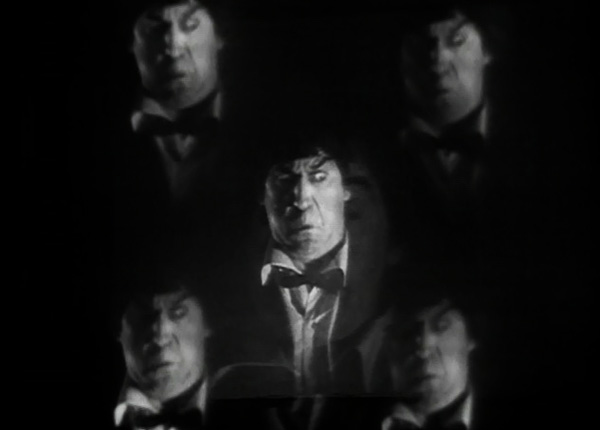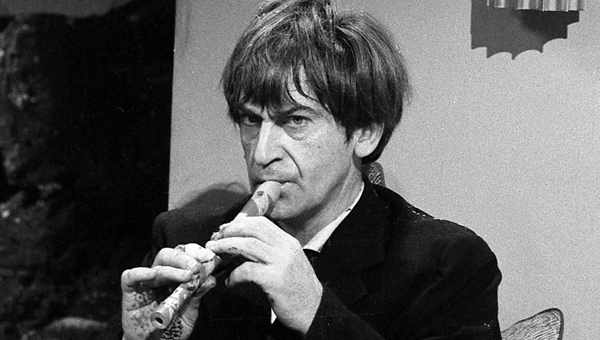The second Doctor Who regeneration came at a time when the programme’s future was uncertain. What finally persuaded Patrick Troughton to hang up his recorder?

In 1969, Doctor Who wasn’t flying high in the ratings. That’s not to say it was unpopular, as it had a hardcore band of five or six million viewers who would always tune in to see the Time Lord’s latest adventures. But the viewership was certainly lower – perhaps brought on by the Troughton era’s tendency to screen longer serials for budgetary reasons (1966’s ‘The Invasion,’ for example, ran for a full eight weeks.)
Moreover, the seasons themselves were getting longer. Indeed, the 1969 series ran for a staggering 44 weeks, and such a fast-paced schedule put considerable pressure on the cast and crew. Patrick Troughton loved the part – particularly because of the friendship he enjoyed with his companions Frazer Hines and Wendy Padbury – but it became clear in 1969 that a second Doctor Who regeneration might be on the cards.
Or was it? Back in 1966, the first Doctor Who regeneration had given the BBC the opportunity to reignite the programme’s flame following the departure of William Hartnell. But there was a genuine feeling at the BBC that Doctor Who might have run its course – after all, it had been on the air for a solid six years, and had already clocked up many hundreds of episodes. As the script editor Terrance Dicks once said, six years was a very good life for a TV show.

And so when it came to writing the final story of the season (‘The War Games’) the writers took it upon themselves to ‘wrap things up,’ to a degree. Not only is the adventure epic in scale – spanning an incredible ten episodes – but the story is also the first to explain the Doctor’s origins. He is revealed to be a Time Lord, having stolen his TARDIS because he was bored with simply observing the cosmos from afar. He wanted to experience the universe first-hand, and so ran away.
But the events of ‘The War Games’ leave the Doctor with a problem too big to solve on his own. He is forced to summon his own people for help, and in so doing reveal his location. As a result, the Time Lords take him back to their home planet and put him on trial for breaking one of their most important laws – that of non-interference in the affairs of other planets.
All of these events could have wrapped-up the Doctor Who saga quite neatly, without the need for a second Doctor Who regeneration. The Time Lord could have finally returned home, with his mysterious origins finally explained, and it may have delivered a satisfying finale to one of the 60’s most popular shows.
Indeed, one does still wonder whether the decision to bring the series back in 1970 was made at a late stage. Even when the second Doctor Who regeneration is being mooted in the courtroom (with the Doctor being shown a number of possible faces for him to change into) the real Third Doctor’s is not among them. Similarly, Troughton’s transition into Jon Pertwee is never seen on screen; ‘The War Games’ episode ten simply ends with the Doctor tumbling into a black vortex, shouting, “No! You can’t do this to me!”
But in hindsight, there are several reasons for this. Unusually, when the BBC filmed the scene of Patrick Troughton falling into the void, they hadn’t yet cast the Third Doctor, so they were unable to film a proper regeneration. And even though Jon Pertwee had been contracted by the time they shot the ‘faces’ scene in the courtroom, the deal hadn’t been finalised – so perhaps they were erring on the side of caution.
At the same time, even getting to the second Doctor Who regeneration proved difficult for the writing team. Terrance Dicks and Malcolm Hulke had been drafted in at the last minute after two earlier stories had fallen through (a four parter and a six parter, one of which had the working title of ‘Doctor Who and the Impersonators.’) There was suddenly a ten episode gap at the end of the season, and a very limited budget.
And as script editor, Dicks took it upon himself to plug the gap, hiring friend and writing mentor Malcom Hulke to assist with the daunting task of writing a ten week serial that would explain the Doctor’s origins – and (possibly) have a regeneration at the end.
The Second Doctor Who regeneration was also influenced by budgetary concerns. The BBC wanted to find ways to make the programme more cost-effective going forward, and it was therefore decided that the Doctor should be sent to Earth “in exile” as part of his punishment – meaning that all of his adventures could take place in kitchens and sitting rooms rather than in specially-designed space stations!
Was this a compromise on the BBC’s part? As in, it agreed to continue making Doctor Who so long as it could so in a cheaper manner? We may never know for sure.
And whilst the second Doctor Who regeneration at the end of ‘The War Games’ signals the end of an era in many ways, there was a time when the Doctor’s companion Jamie (played by Frazer Hines) was going to remain in the TARDIS team. After announcing his departure, Hines was told that he was welcome to stay on with Jon Pertwee, and the actor even suggested this idea to his agent, who vetoed it out of hand. According to Hines, she insisted that three years was long enough to work on one programme, and it was time for him to do other things.
But it was a disappointment for Hines, and he has always maintained that – if his and Patrick Troughton’s agents hadn’t been so insistent – they would have stayed in the TARDIS forever. It was a job that they both enjoyed immensely.
But as it turned out, the second Doctor Who regeneration took place on the 21st June 1969, and viewers would have to wait until January 1970 to see Jon Pertwee in action as Doctor number three…
Read about the Third Doctor’s regeneration here.

Cybermen Doctor Who scarf – order now from the Lovarzi shop!


Leave a Reply